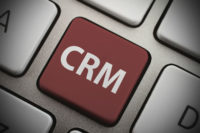According to the NRCA, the average profit for a roofing contracting company is 2.8 percent. When you consider how much personal money owners have invested in their business and the risks they take, it makes the return on investment look minimal. That’s when reality sets in and you realized that 2.8 percent is an average. Half of all roofing companies make less than that. To ensure your company is in the top half of the numbers follow these financial tips. Remember, as the adage says, “You cannot manage what you cannot measure.”
in their business and the risks they take, it makes the return on investment look minimal. That’s when reality sets in and you realized that 2.8 percent is an average. Half of all roofing companies make less than that. To ensure your company is in the top half of the numbers follow these financial tips. Remember, as the adage says, “You cannot manage what you cannot measure.”
Chart of Accounts
Here are the basics in roofer accounting that will help set up a money management plan.
• Revenue:Also known as “sales,” revenue is all the money the company takes in from selling goods and services. Since this is the base of the company’s health, it is calculated at 100 percent. All other financial numbers are calculated as an actual amount or percentage of revenue.
• Direct expenses:Often referred to as “job expenses,” these costs include anything directly related to the job. Try to get as much in this group as possible. The better your estimating process calculations, the more money you will make. There are a number of computer systems on the market to help with this task, or a simple Excel spreadsheet will do the trick. Examples of direct expenses are labor, labor taxes, collateral damages, disposal, job materials, subcontractors, permit fees, sales commission, transportation, warranty fees and workers’ compensation insurance. Direct expenses typically run 60 percent to 80 percent of revenue.
• Gross profit:What’s left over after paying direct expenses is considered gross profit. This could be all profit if you didn’t have any overhead. Thinking about it that way helps keep overhead low and profits high. Typical roofing companies make between 20 percent and 40 percent gross profit in the roofing industry. The number for service-focused companies may be higher while the number for new construction and large commercial companies may be lower.
• Indirect expenses: Ask yourself this question: “If the company didn’t have any work to do, would this money be spent?” If you answer yes, then that is an indirect expense. Examples include advertising, fuel, auto service, bad debt, bank charges, subscriptions, education, insurance, late fees, legal fees, rent, office supplies, phone service, management payroll, postage, taxes and utilities. Feel free to break those categories down into more specific subparts to better track for accuracy. Indirect expenses run between 20 percent and 40 percent of revenue on average.
• Profit: Now the good stuff — profit. Profit is not a dirty word. Profit is vital to the success of any company. Without profit the company couldn’t reinvest in itself for new tools, equipment or vehicles. Work with your accountant closely to ensure your numbers are accurate and taxes low. It’s often suggested that the owner not touch the company’s profit, keeping it in the business, ensuring a healthy entity. As stated earlier, the average profit is 2.8 percent, but pulling down 5 percent is good and 8 percent is excellent in the roofing industry. These numbers are calculated after the owner’s payments are deducted.
Managing Expenses
These tools help control costs and ensure a healthy company.
• Asset utilization tool:Are you sure you need that new truck? How do you know? Can you quantify it with numbers and prove it? The asset utilization tool looks at the company’s potential increased revenue by asset and produces an increased sales number based on that asset’s cost. It’s a great little tool for growing a business within means.
• Weekly cash flow forecasting tool:Cash flow is like the company’s bloodstream bringing vital nutrients to the company. Knowing about potential issues ahead of time grants opportunity for correction. Can you afford to take on that big project with extended terms? This tool will tell you.
• Overhead absorption tool: There are times when you need to get down and dirty on a price to win a big project. Using the overhead absorption tool will let you know exactly how low you can go and still be profitable for that month. By using larger jobs to “absorb overhead,” your business can be even more profitable by hitting breakeven earlier in the month.
• Product mix matrix:Not all systems have the same margin. A simple shingle re-roof is most likely a competitive market, whereas service work is highly profitable. The product mix matrix analyzes the various profit margins by system and sales volume and creates an accurate budget procedure based on market share and real production numbers. This is valuable if your company does anything other than one system or one pricing structure.
• Sales trend analysis tool:Salespeople like to know where they stand and how much further they have to go to meet goals. The sales trend analysis tool looks at what it would take to meet goals by quantifying a road map to success. It can also use the data from year’s past to project seasonal trends creating a highly accurate forecasting program for your sales team.
• Weekly flash report:Waiting until the end of the month for financials is like trying to drive your car by looking in the rearview mirror. Timely numbers are vital to making the right decisions. The weekly flash report is a collection of the most important information you need delivered in a single sheet that’s easy to read. Information such as cash balances, accounts receivable, accounts payable, production numbers year-to-date, month to date, and this week versus last week (YTD/MTD/TW vs. LW), sales numbers YTD/MTD/TW vs. LW, jobs on books, marketing goals YTD/MTD/TW vs. LW, and job liability total all come together to provide a snapshot of how your business is performing in real time.
• Breakeven analysis tool:This is the best kept secret of them all. Knowing when your company hits breakeven could help maximize profit every month and help shatter budgets. Breakeven is the point in time when all your monthly bills are paid. From that point on whatever money the company generates after paying direct expenses becomes bottom line profit. Here is a better way to look at it:
Let’s say your company completes $100,000 in work and operates at a 70 percent direct expense, 25 percent overhead and 5 percent profit margin. Producing enough work to meet budget,your company would bring in $5,000 in profit that month. A $60,000 year isn’t bad by any stretch of the imagination.
However, what if you were able to work really hard in the same time period and complete $120,000 worth of work that month? With the same expenses breakdown, your company would actually make $11,000 — more than twice the profit during the same time period.
Once all overhead expenses are paid, the entire 30 percent becomes straight line profit. In this case, the original $5,000 profit (5 percent of $100,000) is combined with the 30 percent of the additional $20,000 in production ($6,000). It’s possible to make more in a few days than you can all month.
This month’s homework is to create a weekly flash report if you don’t already have one.
If you would like more detailed information about any of the ideas listed above or help with implementation please e-mail me at the address below. I’d be happy to send you sample forms you can use immediately for your own company.





Report Abusive Comment